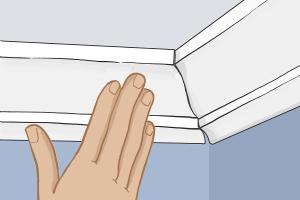Mastering Corner Trim: Your Ultimate Guide to Cutting Corner Trim Like a Pro

-
Quick Links:
- Introduction
- Tools Required for Cutting Corner Trim
- Types of Corner Trim
- Measuring and Marking
- Cutting Techniques
- Installation Process
- Finishing Touches
- Common Mistakes to Avoid
- Case Studies
- Expert Insights
- FAQs
Introduction
Cutting corner trim can seem daunting, especially for DIY enthusiasts and novice carpenters. However, with the right tools and techniques, anyone can achieve professional-looking results. This guide will take you through everything you need to know about cutting corner trim, from selecting the right materials to installing and finishing your trim. Whether you're updating your home's interior or taking on a new project, mastering corner trim is an essential skill in carpentry.
Tools Required for Cutting Corner Trim
Before you begin, make sure you have the following tools at your disposal:
- Miter saw or hand saw
- Measuring tape
- Pencil
- Square
- Level
- Nail gun or hammer
- Wood glue (optional)
- Sandpaper
- Paint or stain (optional)
Types of Corner Trim
Understanding the different types of corner trim will help you choose the right one for your project:
- Inside Corner Trim: Used for corners that face each other, typically in rooms.
- Outside Corner Trim: Designed for corners that protrude, often seen on exterior walls.
- Baseboards: Trim at the bottom of walls, often used in conjunction with corner trim.
- Crown Molding: Decorative trim that connects the wall to the ceiling.
Measuring and Marking
Accurate measurements are crucial in achieving seamless corners. Follow these steps:
- Use a measuring tape to determine the length of each wall.
- Mark the measurements clearly on the trim pieces.
- For inside corners, you typically want a 45-degree cut. For outside corners, the angle may vary.
Cutting Techniques
There are multiple techniques for cutting corner trim effectively:
Miter Cut
The most common method for cutting corner trim is the miter cut, which creates a clean joint at a 45-degree angle.
- Set your miter saw to 45 degrees.
- Align the trim with the saw blade and make the cut.
Bevel Cut
A bevel cut is used for thicker trim or when a different angle is required. Adjust the saw's bevel settings as necessary.
Installation Process
Once your pieces are cut, it's time to install:
- Start with the longest pieces, typically the baseboards.
- Use a level to ensure each piece is straight.
- Secure the trim with nails or adhesive, ensuring you fill any gaps with caulk or wood filler.
Finishing Touches
After installation, you might want to paint or stain your trim. Here are some tips:
- Sand the edges for a smooth finish.
- Apply primer if painting, allowing time to dry.
- Use quality paint or stain for the best results.
Common Mistakes to Avoid
Many DIYers make mistakes when cutting corner trim. Here are a few to watch out for:
- Not measuring twice before cutting.
- Using dull blades, which can lead to splintering.
- Forgetting to account for the thickness of the trim during measurements.
Case Studies
When learning how to cut corner trim, examining real-world examples can be beneficial.
Case Study 1: Residential Living Room
A homeowner updated their living room with crown molding and baseboards. They initially struggled with miter cuts but improved by practicing on scrap wood first.
Case Study 2: Office Renovation
In an office renovation, proper measurements saved time and materials. The team used a laser level to ensure perfect alignment.
Expert Insights
According to professional carpenter John Smith, "The key to cutting trim is preparation. If you measure and mark accurately, the cutting will be the easiest part." Utilize expert advice as you work through your project.
FAQs
1. What type of saw is best for cutting corner trim?
A miter saw is generally the best choice for cutting corner trim due to its precision and ability to make angled cuts.
2. How do I measure for corner trim?
Measure the length of each wall and mark where the trim will go. Always double-check your measurements before cutting.
3. Can I install corner trim without a nail gun?
Yes, you can use a hammer and finishing nails if you don't have a nail gun.
4. What's the difference between miter and bevel cuts?
Miter cuts are angled cuts typically at 45 degrees for corners, while bevel cuts adjust the angle of the blade itself, not just the saw's fence.
5. How do I fill gaps in corner trim?
Use caulk or wood filler to fill any gaps, then sand and paint for a seamless finish.
6. Is corner trim necessary?
While not strictly necessary, corner trim adds a professional touch and can protect walls from damage.
7. How do I clean corner trim?
Dust regularly and wipe down with a damp cloth. For painted trim, use a gentle cleaner to avoid damage.
8. Can I use corner trim outdoors?
Yes, but make sure to use weather-resistant materials for outdoor applications.
9. How long does it take to install corner trim?
The time varies based on the size of your project, but it can take a few hours to a full day.
10. What finishes are best for corner trim?
Paint or stain can enhance the appearance of corner trim, but always consider the overall decor of your space.
Random Reads